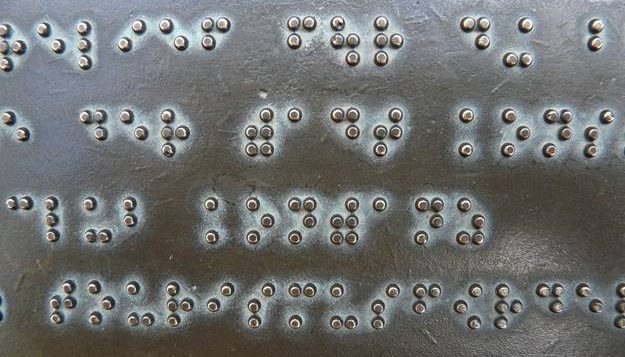Making events accessibile to individuals with disabilities is important. Different techniques can help individuals with different types of disabilities.
How to Host Accessible Events
Disability relates to all aspects of events. In Part #1, I discussed how to determine that a venue is accessible. But there are other aspects to consider. Events can be made accessible regarding overall, printed material, pre-event communications, signs, registration table, rooms/seating, communications, speakers/videos, and food. Not all the suggestions may be applicable to you.
Overall:
- Train event staffers on different types of disabilities. For example, teach employees to focus on the individual, not their disability.
- Create a self-identification plan for people with invisible disabilities. For example, the organization Hidden Disabilities has adopted the sunflower as a symbol. Attendees may wear a sunflower lanyard or something similar if they wish to be identified.
- Do not charge a person who comes to the event with an individual with a disability if they are there to assist.
- Let people ask questions at event via written form.
- Do not have scents.
Printed Materials:
- Use simple fonts.
- Use left-justified text. Other text may be challenging to read.
- Avoid using all caps and underlining.
- Use colors that contrast well with each other.
- Include white space.
- Provide materials in a variety of formats, including standard, large print, Braille, plain language, and easy read. As writing in plain language and easy read is difficult, you may want to hire an expert to write those materials.
Pre-Event Communications (advertising your event):
- Include a notification about disabilities/accommodations. A sample notification is “People with disabilities are welcome at this event. We will have [certain accommodations – i.e. – interpretation services]. Please contact [e-mail address and phone number] with additional accommodation requests.”
- Alternatively, you can ask specifically about dietary needs, requests for different types of materials, seating requests, and more. You can also ask an open-ended question asking about accommodations. Not every request can be granted.
- Warn about flash photography, strobe lights, loud noises, and fog machines.
Signs:
- Use high contrast lettering and symbols.
- Avoid glare.
- Include common language (i.e., write “men’s” instead of “kings’” for men’s restrooms).
- Signs should be well lit.
- Do not include cursive fonts.
- Add temporary signs if current signs are hard to read or too small.
Registration Table:
- Place registration and sign-in desks/tables at a height that can be easily reached by people who use a wheelchair or scooter or are short-statured.
- Provide multiple registration methods.
- Provide printed versions of PowerPoint presentations.
- Do not refuse to help someone who is wearing headphones.
- Give everyone a nametag.
- Offer sensory toys.
- Provide a range of sizes of clothes (i.e. – t-shirts).
Rooms/Seating:
- Have different types of seating, for example:
- Soft seatsChairs without solid armrests.Chairs with high backs
- Chairs of differing heights
- Avoid seating that is attached to tables.
- Do not put all seating for people with disabilities in the same area.
- Have reserved seating near the front for people with vision or hearing issues.
- Have space for people who use wheelchairs.
- Provide a comfortable place where service animals can rest.
- Make sure there are clear aisles and pathways. Cover cables or cords that cross any aisles and paths.
Communications:
- Have assistive listening devices on hand to lend.
- Provide sign-language interpreters, and put them on the stage, not on the floor next to the stage.
- Include written explanations for visual information, such as photographs.
- Provide simple instructions.
Speakers/Videos:
- Ask speakers to briefly describe themselves, including gender, race, physical appearance, hair, and clothes, when introducing themselves — for example, “I am a Caucasian woman with shoulder-length brown hair wearing a blue shirt and black pants.”
- Ask event speakers to speak clearly, avoid acronyms, and say when they are done talking.
- Require every speaker to use a microphone, and provide one for audience members making comments of asking questions.
- Ask speakers, both panelists and audience members, to state their name each time they talk. Alternately, if there is a moderator, have them identify who is speaking.
- Provide close-captioning of speakers and videos. Ensure that captions are accurate.
Food:
- Check with your caterer in advance to identify the ingredients in food, and provide signage for the dishes listing their contents.
- Consider avoiding foods that contain common allergens.
- Perhaps, have finger food that does not require utensils.
- Provide a variety of food.
- Use food service tables that are between 28 and 38 inches from the floor to the tabletop.
- Serve different foods on separate platters.
- Make staff available to help in self-serve areas.
Debrief
After the event, evaluate your event. You can do so with questionnaires that event attendees complete at or after the event. Use the results to host even better events.
Final Thoughts
Events need to be accessible to people with disabilities. Inaccessible events are unfair to people.
Miriam Edelman, MPA, MSSW, is a Washington, D.C.,-based policy professional. Her experience includes policy work for Congress. Miriam’s undergraduate degree is from Barnard College, Columbia University, with majors in political science and urban studies. She has a master’s in public administration from Cornell University, where she was inducted into the national honorary society for public administration. She has a master’s of science in social work (focusing on policy) from Columbia University. She is a commissioner of the DC Commission on Persons with Disabilities. Miriam aims to continue her career in public service. She is especially interested in democracy, civic education, District of Columbia autonomy, diversity, health policy, women’s issues, and disabilities.




Leave a Reply
You must be logged in to post a comment.